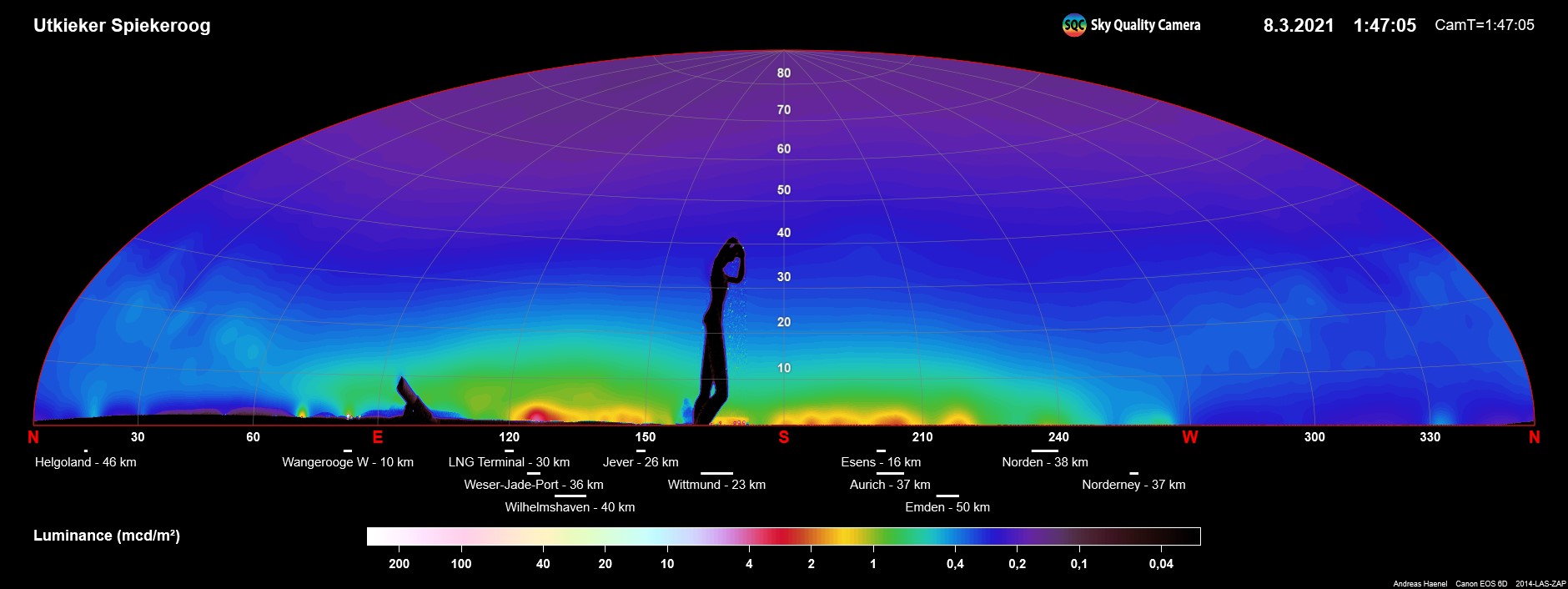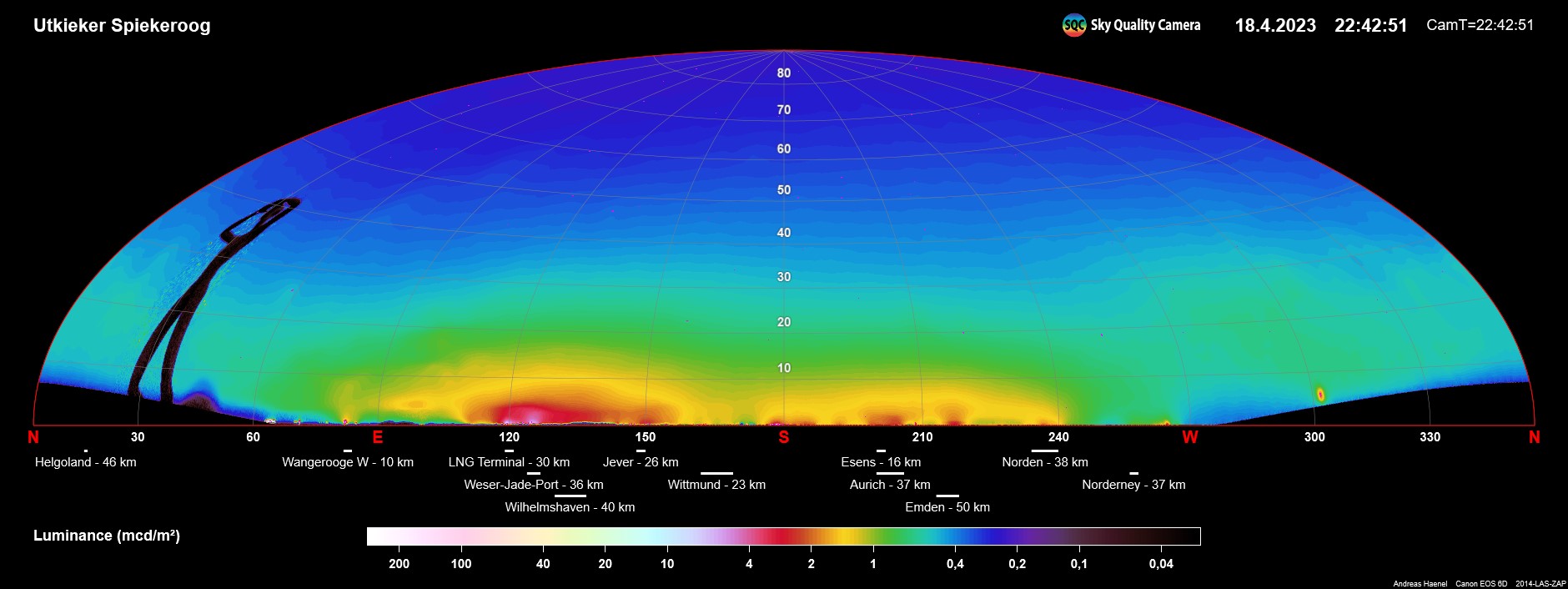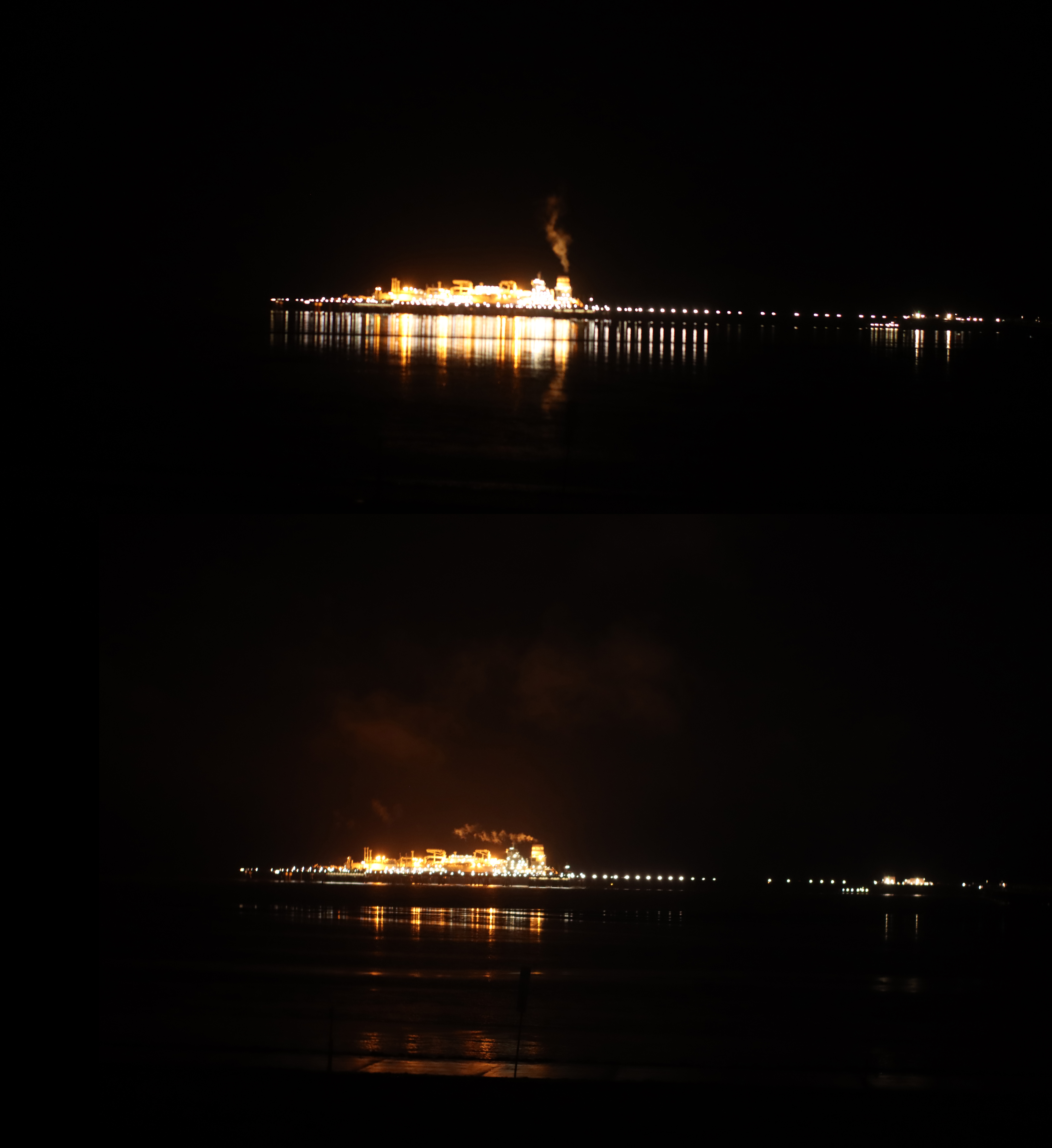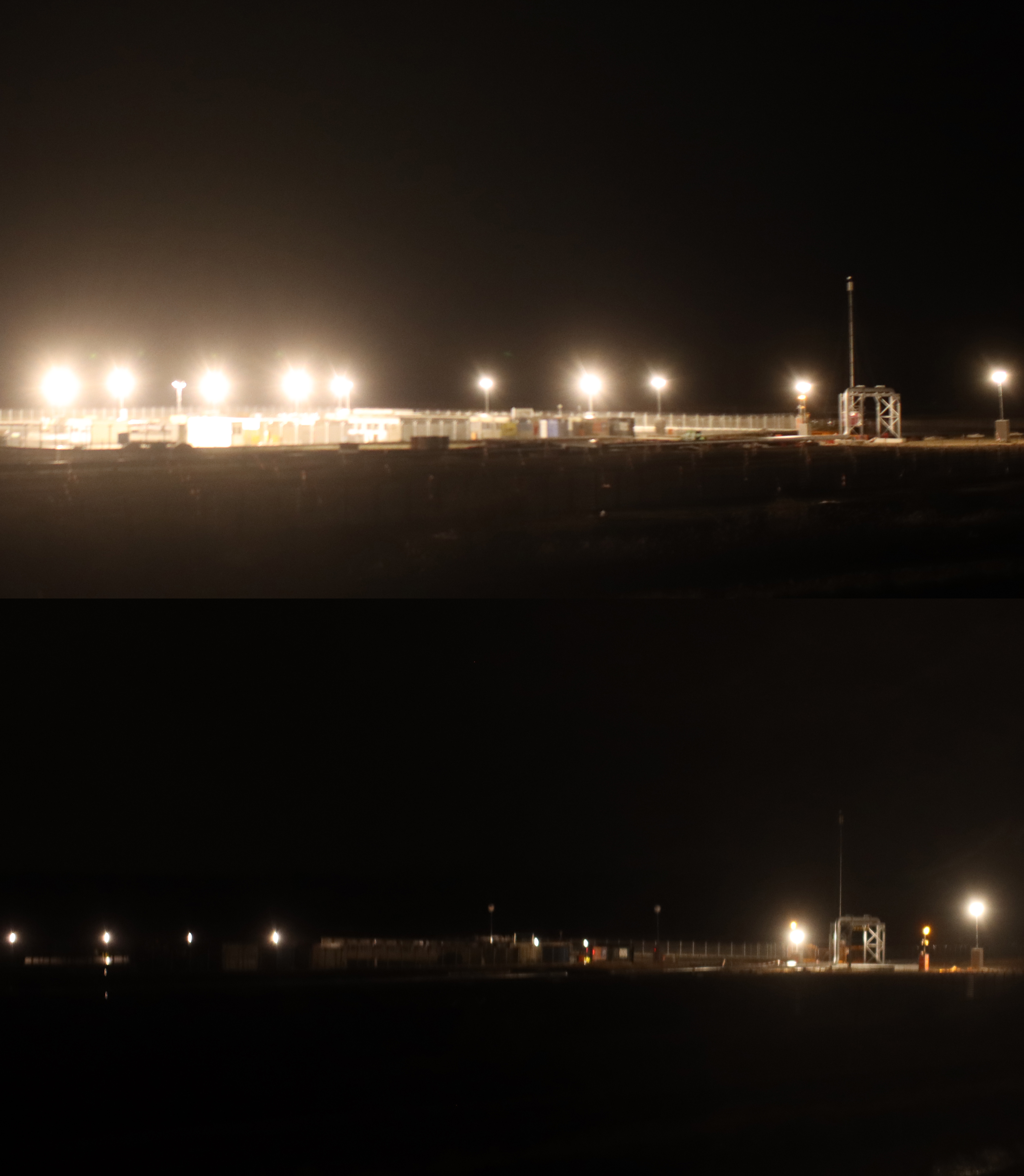Since December 2023, the LNG Terminal in Wilhelmshaven has been contributing to DARKER SKY. By turning off a third of its lighting, "Höegh Esperanza" at the LNG Terminal now emits less light and reduces light emissions.
Photo: The Höegh Esperanza, Andreas Hänel
The "Höegh Esperanza” is a Floating Storage and Regasification Unit (FSRU) for the import of liquefied natural gas (LNG) at the LNG-terminal in Wilhelmshaven, Germany. The ship requires lighting around the clock due to the constant working activities on board.
The National Park Administration of the Lower Saxony Wadden Sea (NPV), through the Environmental and Climate Protection Department of the City of Wilhelmshaven, encouraged the terminal's operator, German Energy Terminal GmbH (DET), and the facility manager, LNG Terminal Wilhelmshaven GmbH (LTeW), to explore reducing light emissions from the illuminated ship at night. This initiative aligned with DARKER SKY and the Trilateral Vision for Dark Skies above the Wadden Sea also aiming to reduce light pollution in coastal areas to promote biodiversity and ecological connectivity in the North Sea region.
Upon the NPV request, LTeW, DET and the FSRU operator Höegh LNG examined options for voluntary nighttime light reduction while ensuring onboard safety and compliance with maritime regulations. The investigation revealed that 15 out of 34 single lights or groups of lights onboard the "Höegh Esperanza" could be safely switched off at night (so called “safe to switch off” lights). Exceptions will be made for emergencies like necessary nighttime operations on board. All in all, the light emissions of the "Höegh Esperanza" were reduced. Additionally, LTeW achieved a 50% reduction in lighting on the FSRU jetty at night, with every other lamp being turned off. Full illumination is only required during mandated nocturnal patrols or exceptional nighttime operations.
The implementation of these measures on 15 December 2023 was made possible through the approval from the State Industrial Safety Inspectorate Oldenburg (GAA Oldenburg), the Water and Shipping Office, and the Port Authority
Light pollution observations of the LNG terminal

Figure 1: Luminance images of the horizon taken from the starry island Spiekeroog, 32 km distant, on 8 March 2021, Andreas Hänel

Figure 2: Luminance images of the horizon taken from the starry island Spiekeroog, 32 km distant, on 18 April 2023, Andreas Hänel
Our external light pollution expert Andreas Hänel (Dark Sky Working Group of the “Vereinigung der Sternfreunde” & Light Pollution Commission of the Astronomical Society) observed the light emissions of the LNG terminal since its commissioning. In 2021 and 2023, he conducted luminance measurements of the terminal and surrounding area (Figure 1 & 2) recording the difference in light emissions. Andreas noted, as per his observation, that the increase of light pollution from the “Utkieker” on the island Spiekeroog was clearly visible.
Andreas welcomed the collaborative efforts towards a decrease of light emissions. The comparing photos he took clearly show the reduction of the light emissions of the LNG-terminal (Figure 3) and especially of the distribution station next to it (Figure 4).

Figure 3: Comparing photos of the LNG-terminal before (above, 27.02.23) and after (below, 08.02.24) the light reduction (ISO 1600, f/1.8, 1/40 s), Andreas Hänel

Figure 4: Comparing photos of the distribution station before (above, 27.02.23) and after (below, 08.02.24) the light reduction (ISO 1600, f/1.8, 1/20 s), Andreas Hänel
Collaborative efforts of all stakeholders
The effective initiative to decrease light emissions demonstrates a collaborative approach of all stakeholders involved towards more environmental care and responsibility.
Mindaugas Petrauskas, Managing Director of Höegh LNG Wilhelmshaven GmbH, reflects on the 'Darker Sky' initiative as a shining example of successful collaboration among all partners of the Wilhelmshaven LNG Terminal and the relevant authorities. He emphasizes how the modifications to the terminal are helping to reduce the environmental impact of operations without compromising safety.
"We have great respect for the sensitive coastal region of Lower Saxony and are fully aware of our responsibility. The constructive and responsible collaboration among the partners will continue to be carried forward in the future.”
Ralf Kohlwes, Head of the Environmental and Climate Protection Department of the City of Wilhelmshaven, commends the reduction of light emissions as exemplary, addressing diverse requirements within the Wilhelmshaven area which is both an industrial hub and part of the 'Lower Saxony Wadden Sea' Biosphere Reserve, adjacent to the National Park and World Heritage Site 'Lower Saxony Wadden Sea'.
"We are pleased that the LNG Terminal is actively contributing to the internationally renowned 'Darker Sky' program through this reduction in lighting," says Thomas Hohmann, CEO of LTeW. "We achieved tangible results thanks to a close and trusting dialogue with all stakeholders." Also, Dr. Peter Röttgen, Managing Director of DET, expresses gratitude for the collaborative effort with partners LTeW and Höegh LNG. Their joint contribution significantly reduces terminal light emissions, thereby safeguarding the coastal region and the Wadden Sea.
Jürgen Rahmel from the Biosphere Region of Lower Saxony's Wadden Sea appreciates the straightforward approach and implementation of the measure. “Preserving and promoting natural darkness in the biosphere region is an essential part of sustainable development. Many steps are and will remain necessary for this. Hopefully, this example will inspire many imitators along the coast, so that increasing light pollution in the Wadden Sea can be halted."

About LTeW
LNG Terminal Wilhelmshaven GmbH (LTeW), a subsidiary of Uniper, operates Wilhelmshaven's LNG Terminal on behalf of DET, utilizing various service providers. LTeW's responsibilities include operational, technical, and commercial management of Germany's first floating LNG terminal in Wilhelmshaven.
About DET
German Energy Terminal GmbH (DET) markets and operates state-initiated floating regasification terminals in the German North Sea, converting LNG back into gas form for injection into the German gas network. DET is responsible for four FSRUs in Brunsbüttel, Stade, and Wilhelmshaven.
About the Trilateral Vision for Dark Skies over the Wadden Sea
Trilateral Vision for Dark Skies above the Wadden Sea aims to protect and restore nighttime darkness in the Wadden Sea region to enhance healthy, species-rich nocturnal habitats and contribute to the sustainable development of the Wadden Sea region.